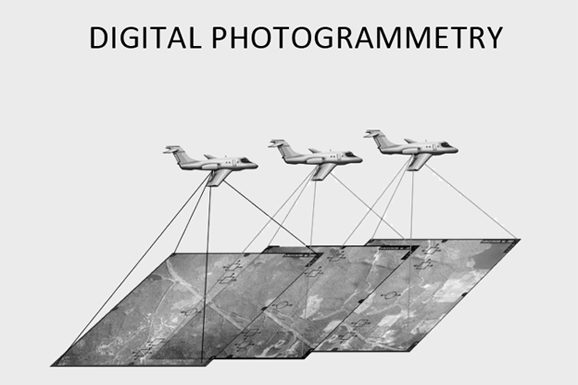Photogrammetry, as its name implies, is a 3-dimensional coordinate measuring technique that uses photographs as the fundamental medium for metrology (or measurement). The fundamental principle used by Photogrammetry is triangulation or more specifically called Aerial Triangulation. By taking photographs from at least two different locations, so-called “lines of sight” can be developed from each camera to points on the object. These lines of sight (sometimes called rays owing to their optical nature) are mathematically intersected to produce the 3-dimensional coordinates of the points of interest.
By the use of digital photogrammetry, mapping, map updating and 3D city models are processed. At PTW, the focus areas in digital photogrammetry are direct georeferencing, the use of digital photogrammetric cameras in mapping, radiometric calibration of digital aerial images, extraction of building outlines and integration of laser scanning and photogrammetry.

